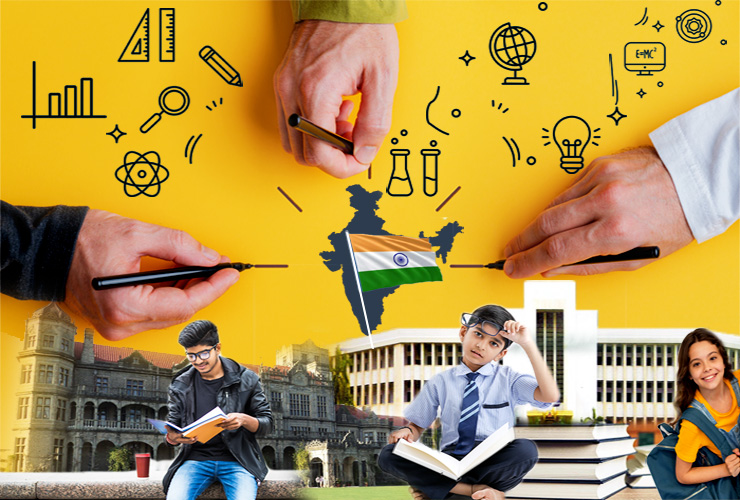National Education Policy (NEP) 2020: Implementation Plan for School Education

National Education Policy (NEP) 2020: Implementation Plan for School Education – NEP 2020 covers wider spectrum of school education from pre-primary to senior secondary
Ministry of Education
National Education Policy (NEP) 2020: Implementation Plan for School Education
Posted On: 18 JAN 2021 6:14PM by PIB Delhi
1. The National Education Policy, 2020 is the third in the series of National Education Policies (1968 and 1986 modified in 1992) in India and is the first education policy of the 21st century. NEP 2020 covers wider spectrum of school education from pre-primary to senior secondary.
2. The recommendations given have varied timelines as the policy is made for next 20 years. Therefore, the implementation of NEP is being carried out in a phased manner.
3. ShikshakParv was organised from 8th to 25th September 2020 for discussing various recommendations of NEP 2020 and its implementation strategies. Around 15 lakh suggestions were received from the stakeholders, which are being examined.
4. To achieve the goals and objectives of NEP 2020, DoSEL has prepared a draft implementation plan with Task lists linking each recommendation with tasks, responsible agencies to carry out the task, timelines and outputs. This task list was shared with the States/UTs/Autonomous Bodies on 10th September, 2020, to provide their feedback/suggestions till 12th October, 2020. Autonomous Bodies of this Department and 31 States and UTs provided 7177 suggestions/ feedback on the task list. These have been analyzed by expert groups and important suggestions have been incorporated in the final version of implementation plan. In addition to above, a series of national workshops on Implementation of NEP 2020 and revision of Samagra Shiksha was held under the chairpersonship of Secretary (SE&L) on 10th November, 27th November and 2nd December, 2020 covering all States and UTs. The document is being finalized and will be released shortly.
5. Appropriate care is being taken to make this implementation plan realistic, flexible and collaborative by inviting suggestions from all corners of the society. It is hoped that this implementation plan so finalised with the inputs of all associates will be able to translate the vision of the policy in the field and will reach to grass root level creating adequate awareness and motivation and competencies among concerned stakeholders, thereby transforming the school education in the country.
6. The major portions of NEP will be covered under the new National Curriculum Framework (NCF) and centrally sponsored schemes. Groundwork for NCF is initiated and it is likely to be developed in the next academic session, that is 2021-22.
7. The department has initiated implementation of NEP by undertaking following activities in accordance with the recommendations of the policy:
i. To undertake 50 hours of mandatory Continuous Professional development of teachers, 18 modules of 4-5 hours each comprehensively covering all aspects of elementary education have been launched under NISHTHA on 6.10.20 for in service teacher training (CPD) in the online mode on DIKSHA platform. This has so far seen more than 3.4 cr course wise registrations and 2.8 cr completions from more than 23 lakh teachers.
ii. In-principle approval has been given for setting up the National Mission on Foundational Literacy and Numeracy Mission. A Committee has been formed for preparing framework on FL&N, codification of learning outcomes etc.
iii. E-learning has been expanded through DIKSHA. DIKSHA provides access to a large number of curriculum linked e-content through several solutions such as QR coded Energized Textbooks (ETBs), courses for teachers, quizzes etc. Till date DIKSHA houses over 3600 QR coded textbooks (tagged with e-content) from 29 states, 1.44 lakh e Contents and more than 300 courses.
iv. The department has launched an initiative called ‘Manodarpan’ for mental health and wellbeing of students. It aims to provide emotional support and counselling to the students under distress. Issuance of advisory guidelines, web page and national toll-free number, interactive online chat options and, national-level database and directory of counsellors are part of the initiative.
v. MoU has been signed between Indian Sign Language Research and Training Centre (ISLRTC) and NCERT to develop Indian Sign Language dictionary for school education.
vi. CBSE exam reforms have been initiated; CBSE will introduce improvement examination from the year 2021 and will introduce English and Sanskrit in 2 levels from the session 2021-22 (already offers Mathematics and Hindi at two levels). Competency based questions have been introduced in the Board exams for class X and XII in a phased manner, increasing by 10% every year.
vii. Learning Outcomes upto Secondary level have been notified and draft of learning outcomes for senior secondary level have been released for inviting suggestions.
viii. The department is also aligning its existing schemes i.e, Samagra Shiksha, Mid Day Meal and Padhna Likhna Abhiyan with the recommendations of NEP 2020. 86 paras of NEP have been proposed to be covered/integrated under the revised scheme of Samagra Shiksha which includes phased introduction of: 1 year of Balvatika and TLMs to all children, Launch of National Mission of Foundational Literacy and Numeracy, upgradation of schools upto senior secondary level including residential schools and KGBVs, Holistic Progress Card (HPC) and tracking of learning outcomes as well as transition of children, appointment of Hindi and Urdu Language Teachers, Capacity building of teachers (50 Hrs CPD), Bagless days and internships, Support for OOSC, Activities of PARAKH, Separate stipend for CWSN girl child; provision for identification of CWSN and Resource Centre at block level, Provision for Hub and Spoke model in vocational education, Provision for Smart classroom and DIKSHA, Support for Assessment Cells in SCERT etc., etc.
ix. States and UTs are also constituting their own Task Force to steer implementation of the NEP provisions in their respective jurisdiction.
******
Source: PIB




